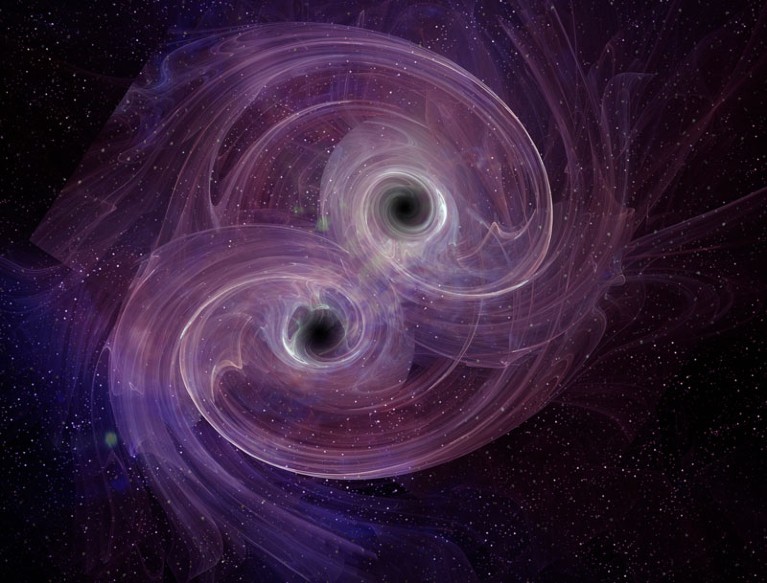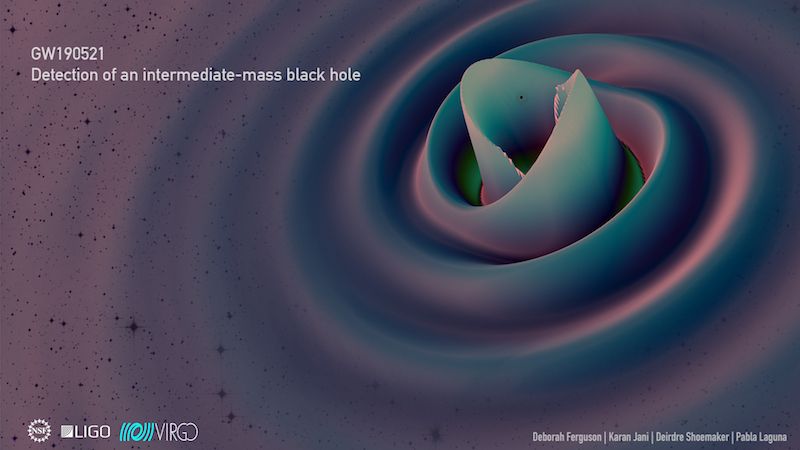Gravitational Waves Emanating from the Fusion of Black Holes Could Serve as a Test for General Relativity
Researchers have identified gravitational waves originating from a black hole merger event, indicating that the resulting black hole has assumed a stable, spherical form. Additionally, these waves suggest that the combined black hole may possess a significantly larger mass than initially anticipated.

Initially observed on May 21, 2019, the gravitational wave event, GW190521, was initially thought to result from the merger of two black holes—one with a mass equivalent to slightly over 85 solar masses and the other with a mass equivalent to approximately 66 solar masses. Consequently, scientists believed the merger gave rise to a progeny black hole with an estimated mass of around 142 solar masses.
However, upon further examination of the spacetime vibrations emanating from the black hole formed by the merger, as it transitioned into a well-defined spherical shape, indications suggest that its mass exceeds the initial predictions. Instead of the initially estimated 142 solar masses, calculations propose a mass equivalent to approximately 250 times that of the sun.
These findings have the potential to significantly contribute to the testing of general relativity, Albert Einstein’s 1915 theory of gravity, which introduced the groundbreaking concepts of gravitational waves and black holes. Steven Giddings, a theoretical physicist at the University of California, remarked, “We are truly venturing into uncharted territory here,” emphasizing the novel insights these observations bring to our understanding of the fundamental principles of gravity.
Gravitational waves and general relativity
General relativity posits that objects with mass warp the fabric of space and time, combining them into a unified four-dimensional entity known as “spacetime.” Gravity, as perceived, emerges from this curvature. Analogously, just as a bowling ball on a stretched rubber sheet creates a more pronounced “dent” than a tennis ball, a black hole induces more curvature in spacetime than a star, and a star causes more curvature than a planet. In the framework of general relativity, a black hole is a point of immensely dense matter, leading to such extreme spacetime curvature that, at the event horizon boundary, not even light can escape the gravitational pull.
Beyond this groundbreaking concept, general relativity predicts that when objects accelerate, they generate ripples in spacetime known as gravitational waves. The larger the objects, the more profound the effect. Consequently, when dense entities like black holes orbit one another, continually accelerating due to their circular motion, spacetime resonates like a struck bell, producing gravitational waves.
These spacetime ripples carry away angular momentum from the spiraling black holes, causing their mutual orbits to tighten. As they draw closer, the black holes merge, forming a new black hole and emitting a high-frequency “chirp” of gravitational waves that reverberates through the universe.
However, Einstein erred in one aspect regarding gravitational waves. He believed these spacetime ripples would be too faint to detect on Earth after traversing the universe for millions or billions of light-years. Contrary to his assumption, in September 2015, the Laser Interferometer Gravitational-Wave Observatory (LIGO) detectors in Washington and Louisiana detected GW150914, gravitational waves associated with merging black holes approximately 1.3 billion light-years away. This detection, marked by a minute change in the length of LIGO’s 2.5-mile laser arms, defied Einstein’s prediction.
Since then, LIGO, along with gravitational wave detectors Virgo in Italy and KAGRA in Japan, has identified numerous such events, reaching a frequency of one gravitational wave event per week. Amidst this wealth of detections, GW190521 stands out as a particularly noteworthy gravitational wave event.
A special gravitational wave event

The merging frequency of the two black holes responsible for the GW190521 signal, positioned a staggering 8.8 billion light-years away from Earth, remained so low that it only reached the sensitivity limits of LIGO and Virgo during the final two orbits of the black holes.
Conducting an independent investigation distinct from the LIGO/Virgo Collaboration, the research team sought to unveil insights into the violent collision and merger of these distant black holes concealed within the signal.
Their analysis revealed that at the moment of collision, the resulting black hole exhibited an asymmetric shape. Given that black holes maintain stability only when possessing a spherical shape, the daughter black hole formed milliseconds after the merger would swiftly assume a spherical configuration.
Analogous to a bell’s shape dictating its ringing frequency, the team explained that as the new black hole underwent shape transformation and stabilization, the frequencies of the emitted gravitational waves, known as “ring down” gravitational waves, underwent shifts. These waves contained crucial information about the mass of the daughter black hole and its rate of spin.
This implies that the ring-down gravitational waves from such a merger provide scientists with an alternative means of measuring the properties of merging black holes, distinct from the conventional method of using gravitational waves produced during the spiraling process.
Examining the gravitational wave signal GW190521, the team identified two distinct ring-down frequencies. When considered together, these frequencies indicated that the resulting black hole possessed a mass of 250 solar masses, significantly surpassing estimates derived from the spiraling gravitational waves. The detection of these ring-down gravitational waves left even the researchers astonished.
“I never thought I would ever see such a measurement in my lifetime,” remarked Badri Krishnan, co-author of the research and a physicist at Radboud University.
The team’s research is detailed in a paper published on Nov. 28 in the journal The Physical Review Letters.
Do not forget to share your opinion with us to provide you with the best posts !



0 Comments